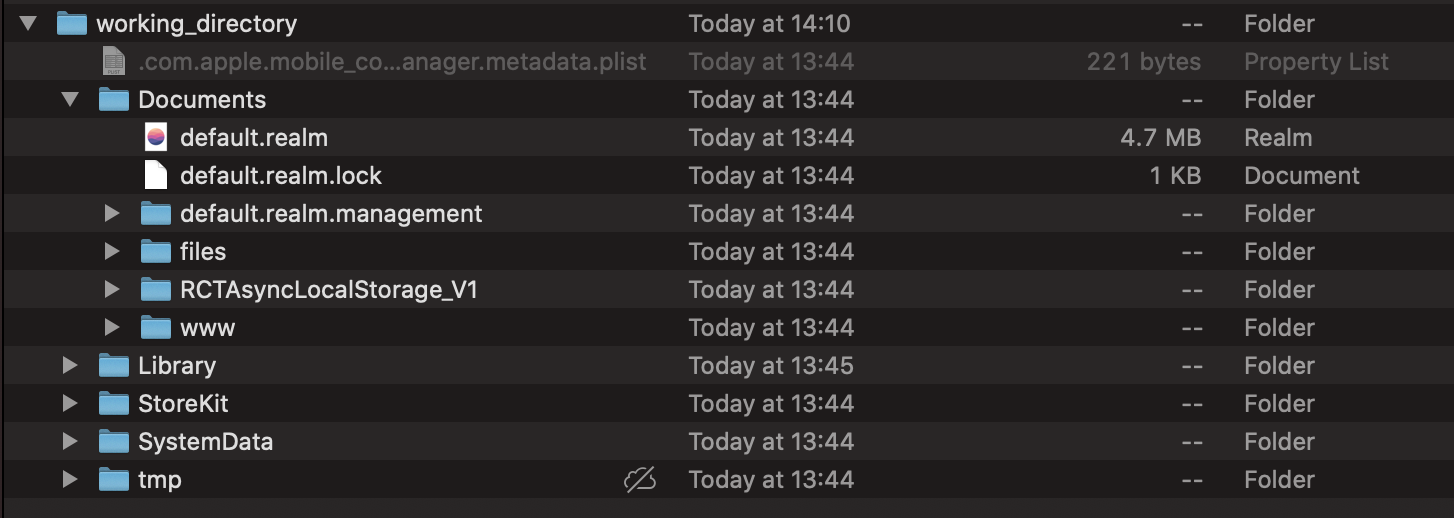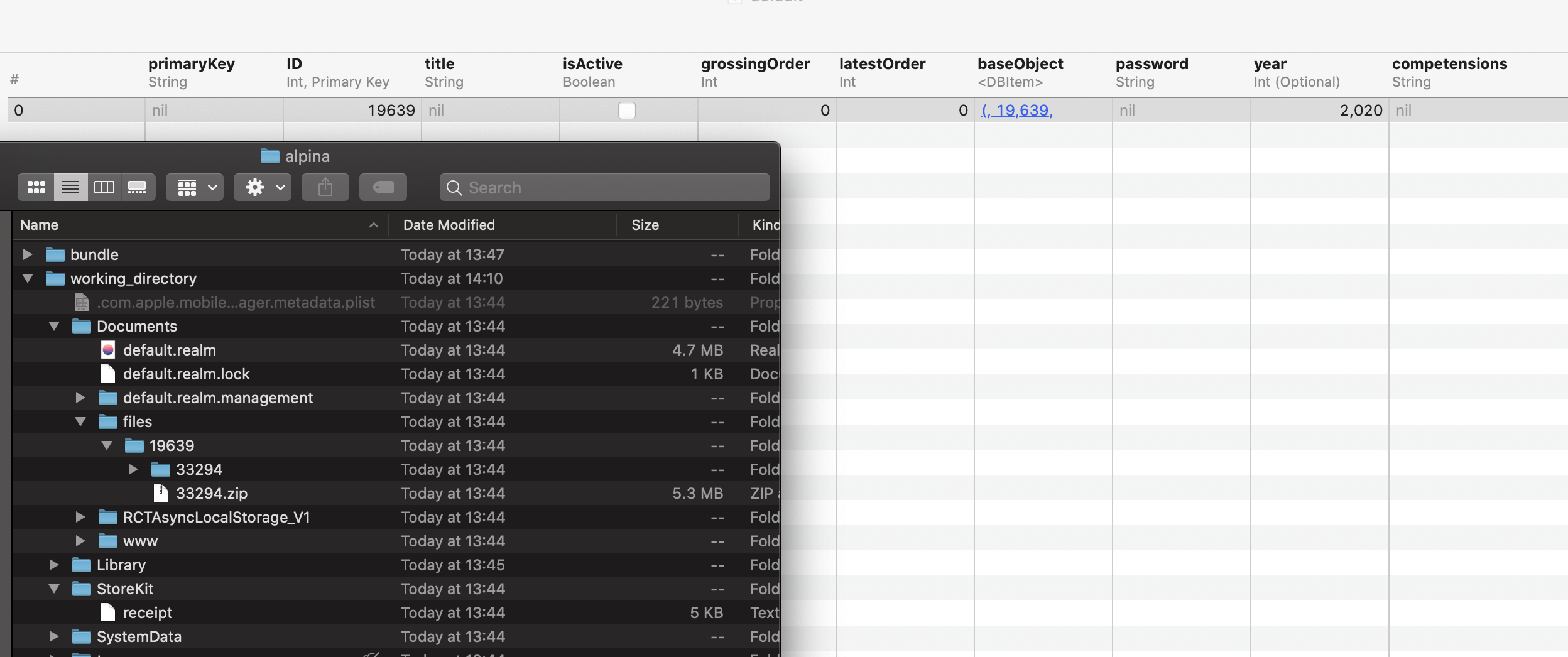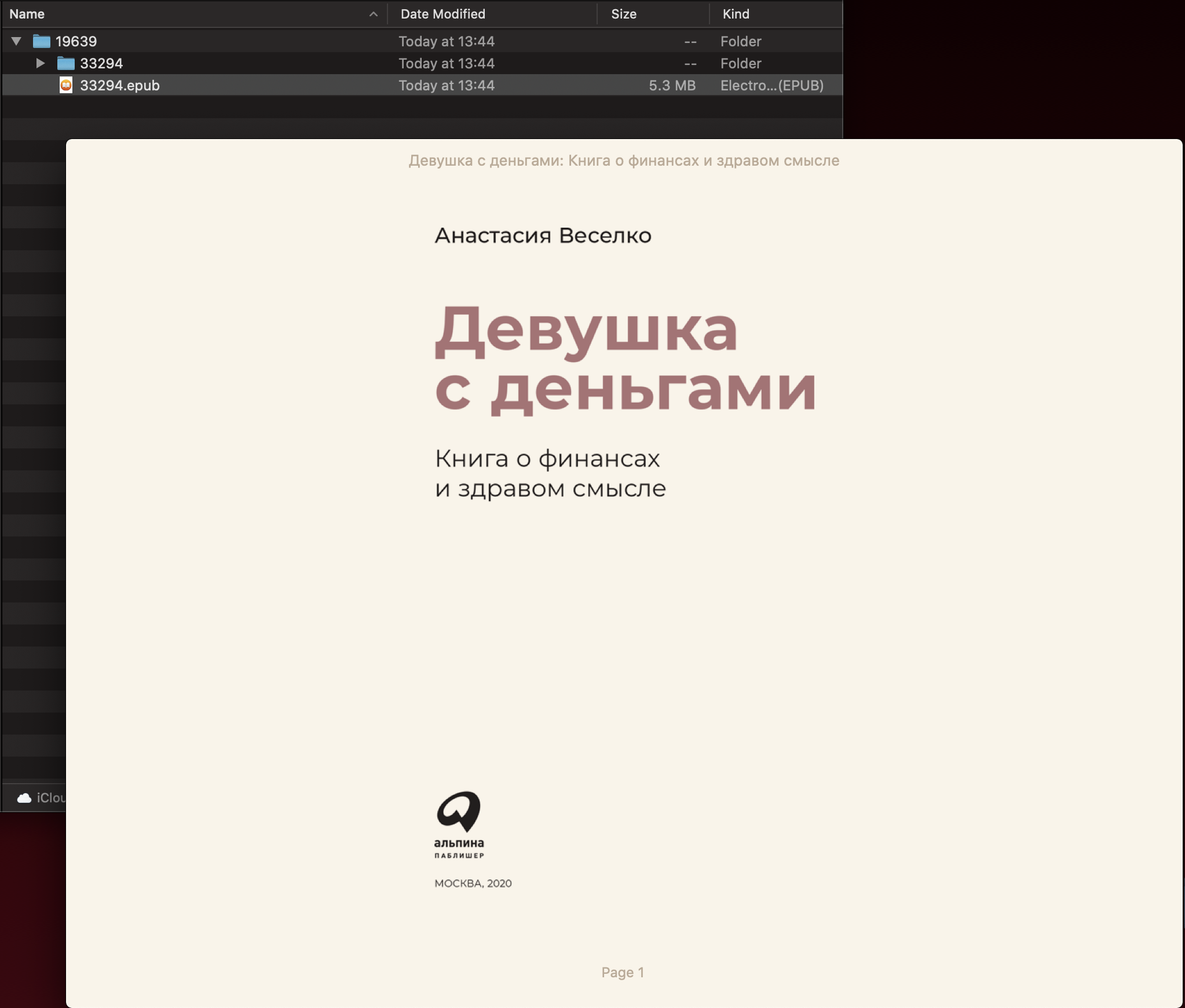
I read a lot, and love non-fiction. But when it comets to ebooks, I prefer native Books.app of iOS - I got used to its controls, animations, and feeling of a “one-stop shop” for all the books I've read lately. So, every time I happen to buy a ebook, first thing I look for is - how can this book be imported into Books.app?
Same was the case with a books of a prominent Russian publisher Alpina Digital back in February. I've bough a book in their Alpina.Books iOS app (version 6.6.14 at that time) and only then noticed that there's no Export button. Is that a problem for reverse engineer? Nope!
First thing first, all iOS apps have 3 locations in the file system where their stuff can be stored:
On my jailbroken test device, I've found where the user data sandbox is located (somewhere under /var/mobile/Containers/Data/Application/) and transferred it to my mac via SSH using scp command. What do we have there?

Cool, let's try to open this Realm database with an official RealmBrowser. A lot of tables:

Let's peek at DBUser - it's pretty simple and had only 2 rows in my case, and one of them has a string with email address I've used during registration. It also has a reference to some DBItem in a column inventoryArray, and that table looks more interesting:

Following looks curious:

Another interesting thing in working directory is files folder with some strangely named contents (and similar to something we've already seen in DBBook table):

Here we go, just rename 33294.zip to 33294.epub and we've got the book:

first, all the sensitive info that may be transferred from server should be excluded from backups. Backups can be stolen, they can be inspected, etc. Settings data protection key will also protect data at rest:
On a jailbroken device, verification of data protection keys can be performed using FileDp tool by @satishb3.Then, the hard part is protection of data on a compromised device - in the extreme case it may be encrypted with a key that is never stored on device and it input by a user at runtime, similar to AppKey architecture we've implemented at ProtonMail. For a ebooks library tho (as we'll see in an upcoming article about Amazon Kindle app), custom book file format can work really well.
As we can see from AppStore page of the app, all books are available via one-time In-App Purchase. This is the reason we see a folder called StoreKit in the user data directory - iOS creates this folder on behalf of the app and saved a receipt file there with info about all purchases and subscription made by user in this app.
Receipt file has a pretty complex structure, and while technically it is possible to read, decypher and validate it programmatically, there is easier way to get to its contents - by sending it to Apple servers which will respond with a JSON:
abjurato@Macintosh ~ % curl -d '{"receipt-data":BASE64_STRING_FROM_RECEIPT}' -X POST https://buy.itunes.apple.com/verifyReceipt
[1] Mobile Security Testing Guide - Data storage on iOS
[2] ProtonMail AppKey local storage protection
[3] AppStore Receipt Validation